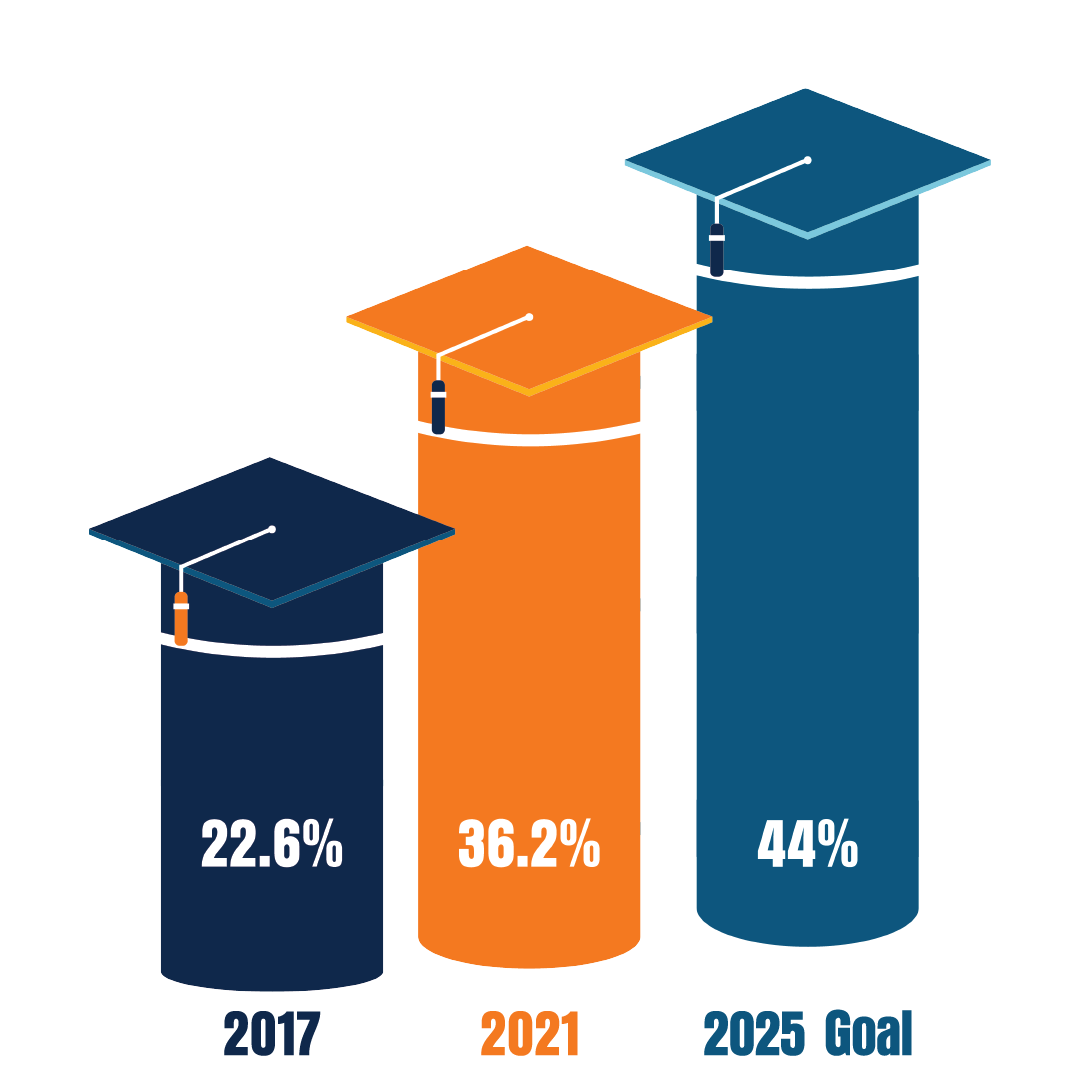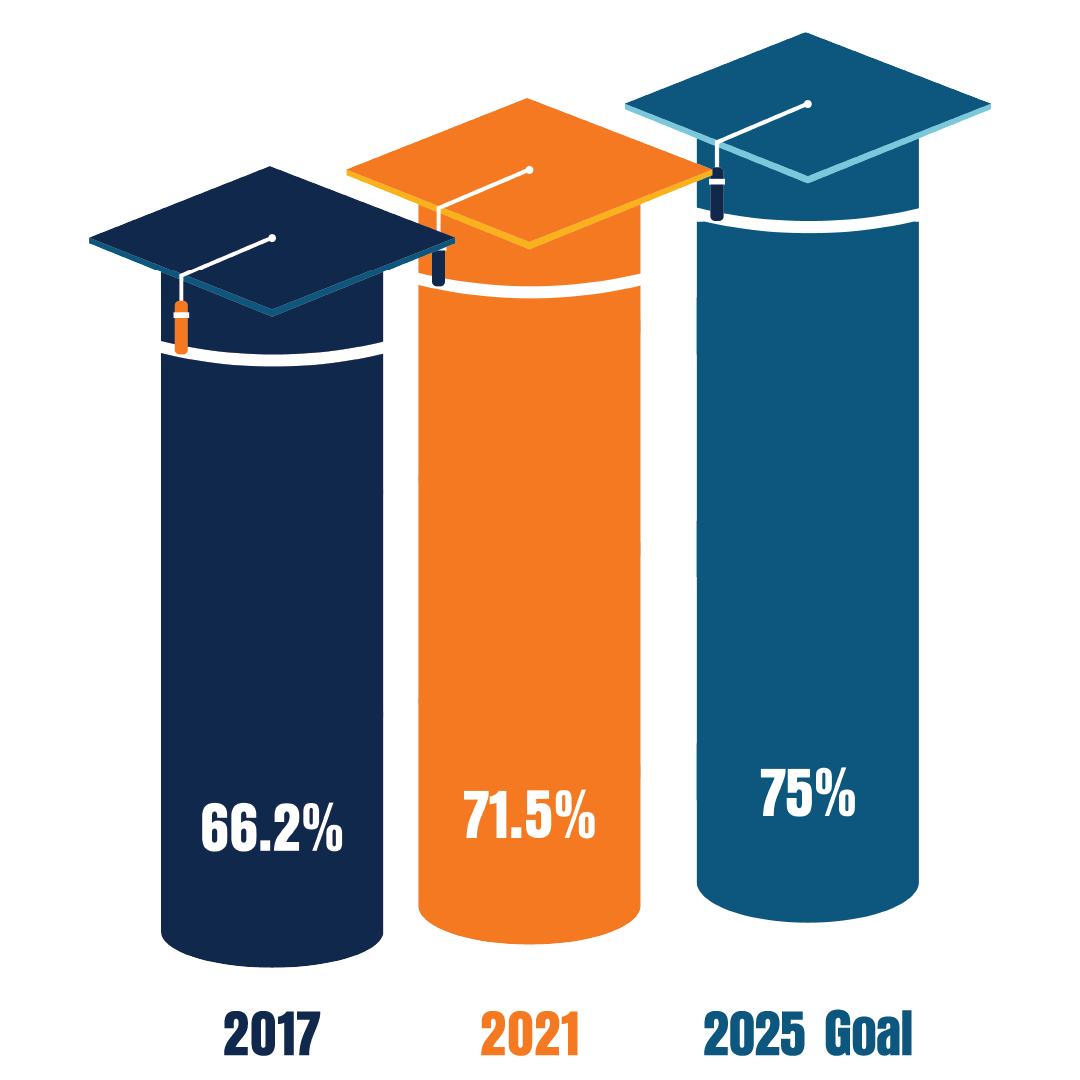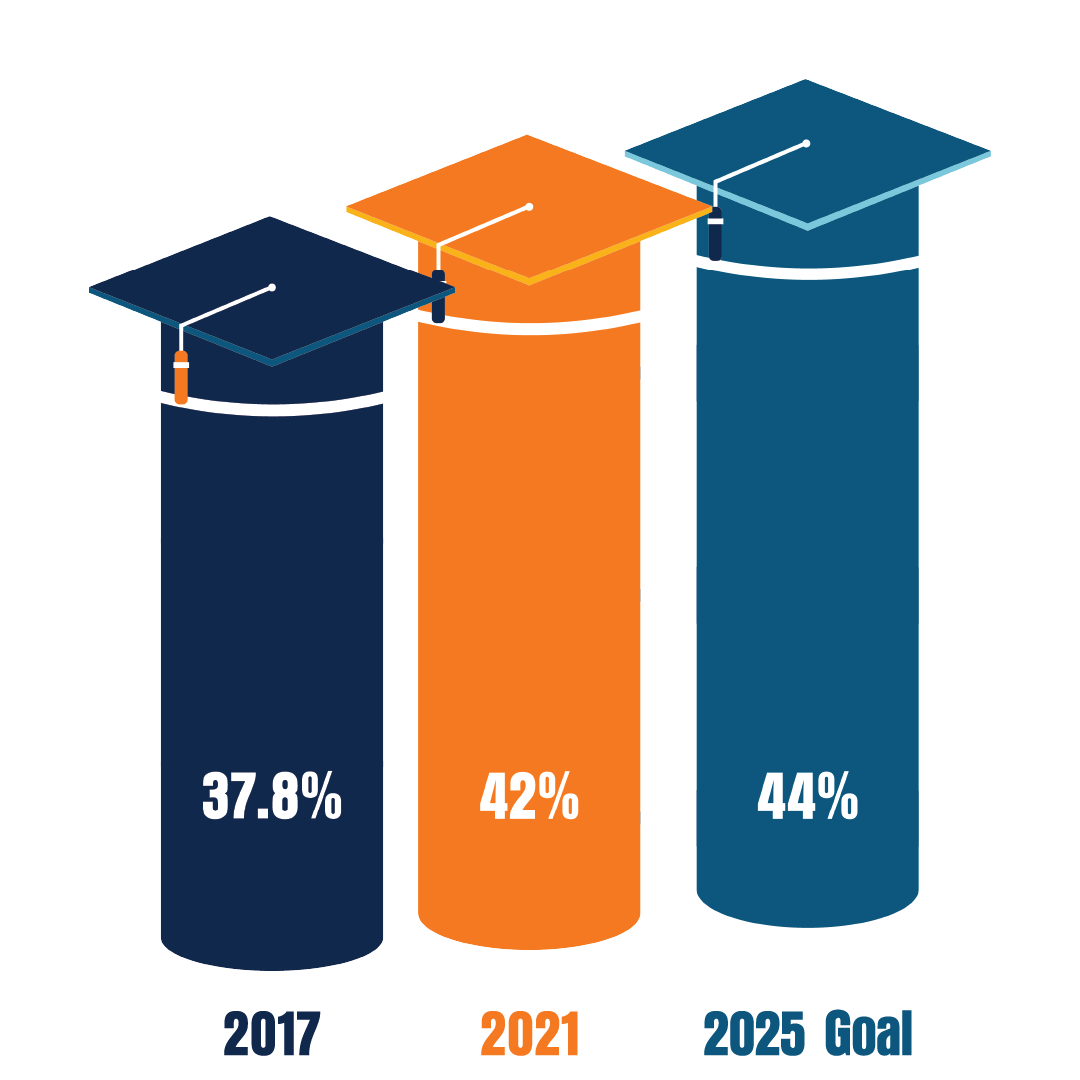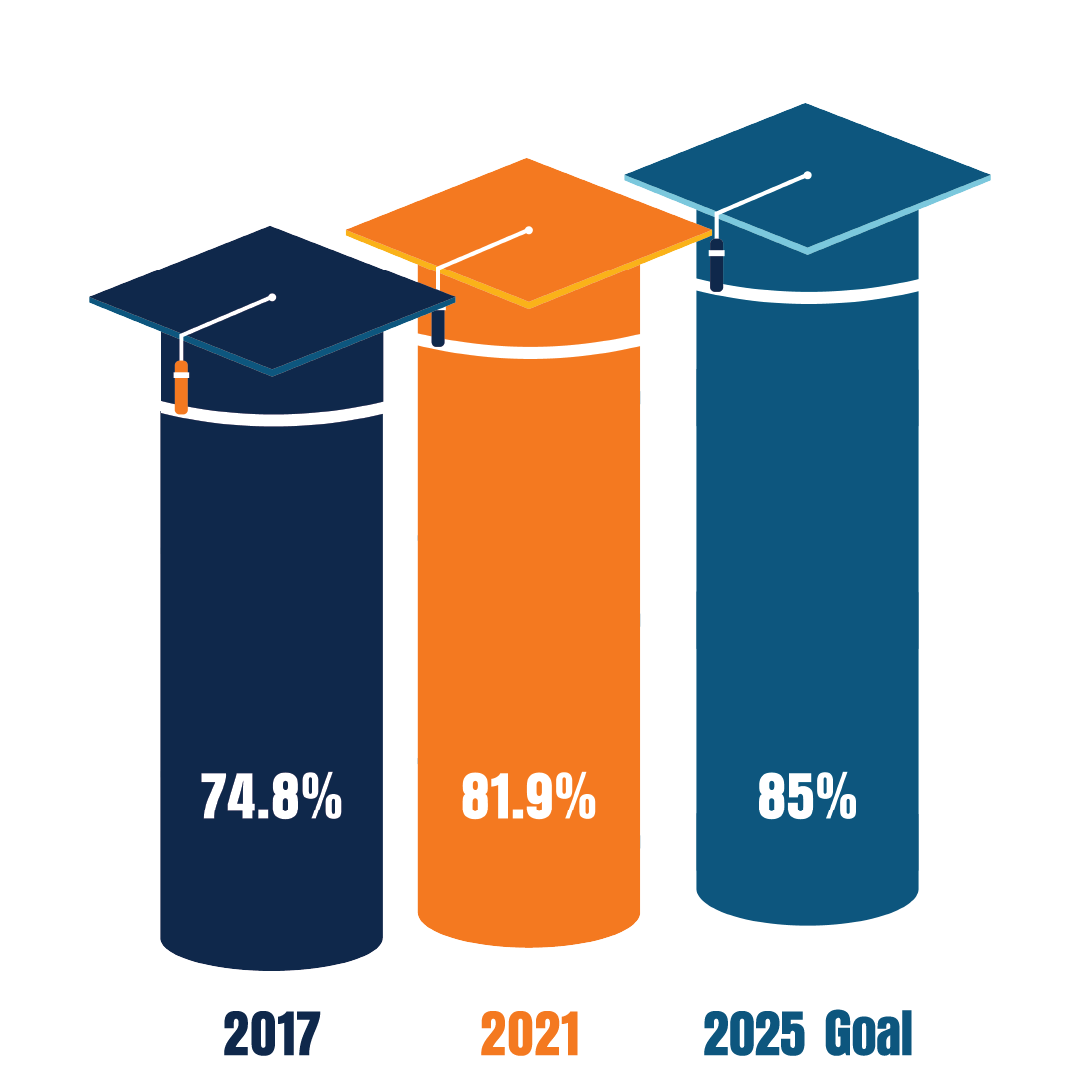
In 2015, when the California State University (CSU) system unveiled Graduation Initiative 2025 (GI2025) – a systemwide plan that aims to improve graduation rates and bolster the workforce statewide – Cal State Fullerton was already ahead of the curve. On the heels of a 19 percent improvement in the six-year graduation rate and a 57 percent improvement in the four-year graduation ratein just the first three yearsof the University’s Strategic Plan, the work and initiatives necessary to achieve GI2025’s goals were already in place for Cal State Fullerton.
The four-year graduation rate for the first-time student 2016 cohort was among the highest in CSUF's history. The four-year first-time student graduation rate for the 2017 cohort (36.2%) exceeds the interim target (34.2%).

The six-year graduation rate for the first-time student 2013 cohort was among the highest in CSUF's history. The six-year first-time student graduation rate for the 2015 cohort (71.5%) exceeds the interim target (69.4%).

Two-year graduation rates for the transfer cohorts beginning in 2017 and 2018 were 42.4% and 41.6%, respectively. The two-year transfer graduation rate for the 2019 cohort (42%) exceeds the interim target (40.5%).

The four-year graduation rate for the transfer cohort beginning in 2016 was among the highest in CSUF's history. The four-year transfer graduation rate for the 2017 cohort (81.9%) exceeds the interim target (80.2%).

It is equally important to recognize the areas where we need to grow. We have not done as well in eliminating differences in graduatin rates between URM and non-URM students and Pell Grant and non-Pell grant recipipents. The effects of the COVID pandemic was particularly impactful in this area. However, we have plans in place to address this.
Over the past three years, the gap between Underrepresented Minorities (URM) and Non-URM students who graduated within six years was roughly 5 percentage points. Preliminary data of the most recent cohort show an increase over this average (7.8 percenrage points).
![]()
Table 3.1: URM equity gap goals and actual data
Over the past three years, the gap between Pell and Non-Pell students who graduated within six years was roughly 4 percentage points. Preliminary data of the most recent cohort show a slight increase over this average (5.5 percenrage points).

Table 3.2: Pell, Non-Pell equity gap goals and actual data ![]()